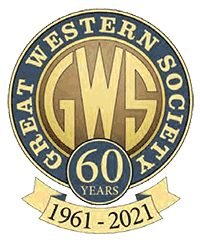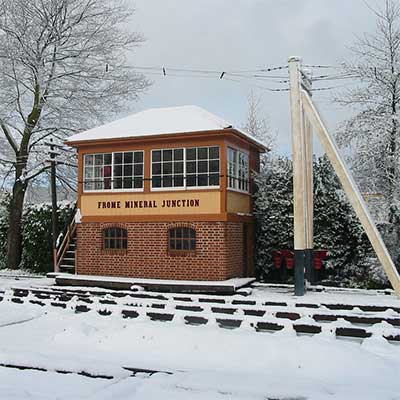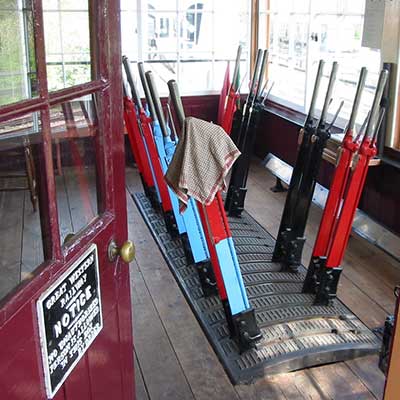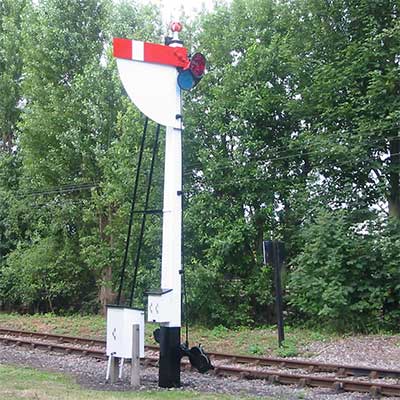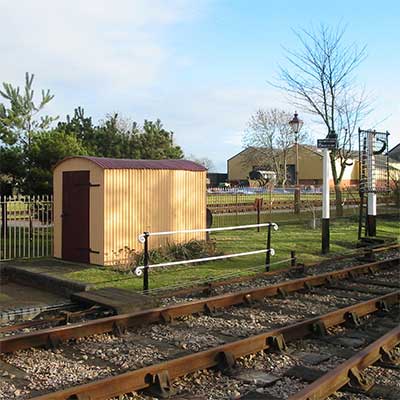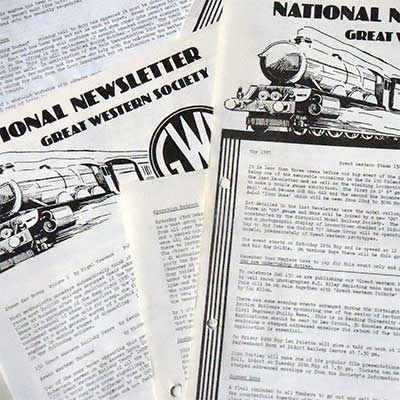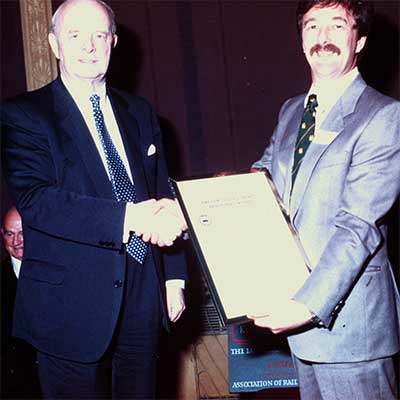The Signalling Project
H Raynar Wilson (who as Signal Superintendent of the Lancashire and Yorkshire Railway, could hardly be accused of nepotism) notes in his seminal text of 1900 that “One of the, if not the, most perfectly signalled railways in Great Britain is the Great Western ... ” (Raynar Wilson, 1900, p.9). It was beliefs akin to his, held by some members of the Bristol Group of the Great Western Society that led to The Signalling Project, to create a typical Great Western signalling system at Didcot Railway Centre.
An Introduction
The project began in earnest in 1975 with the purchase of Radstock North Signalbox and its subsequent restoration. Since then Frome Mineral Junction Signal Cabin has also been acquired and restored and a suitable collection of signals and signalling equipment restored and set to work. The whole offers an authentic re-creation of Great Western Railway signalling practice.
Radstock North Signalbox won the first ever Association of Railway Preservation Societies' signalling award in 1989 and on completion the signalling project was awarded the first ever AIRPS award for achievement by a small group.
More Information about Awards won by the Signalling Project
Radstock North Signal Box

The box, which dates from C.1909, has been restored to GWR 1930s appearance. Adjacent to the box a level crossing has been recreated as it was at Radstock with heavy wooden gates connected to a large hand wheel in the box.
The area around the crossing includes the S&T stores and workshop based around the corrugated iron former parcels store from Winscombe on the Cheddar Valley line.
The signalling controlled by Radstock box is also based on GWR 1930s practice. All the signals are of the wooden post type except for one rare concrete post design. All rodding, cranks and pulley systems are to GWR design, though if you look closely you will see that some of the equipment is marked BR (WR). The only difference is that marking - the designs remained the same many years after the GWR ceased to exist.
Inside the box, the lever frame of the now very rare 5 1/4” double twist type is original to Radstock North relocked to work the layout at Didcot. Everything from the instruments on the Block Shelf down to the ‘GWR’ First Aid Outfit have been carefully selected and restored to give a uniquely accurate GWR look to the interior. The presentation is not ‘glistening museum’ but rather ‘gleaming workaday’.
With the lever tops brasses highly polished, the combined smells of Brasso, floor polish and paraffin and the warmth generated by a cast iron stove fed with best Welsh steam coal who could doubt its authenticity ?
More Information about Radstock North Signal Box
Frome Mineral Junction Signal Cabin
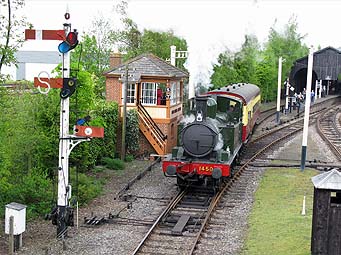
Frome North box was purchased in 1984, and having overcome the hurdles of removing the box from a high embankment, closing the main road through the town and isolating an overhead power line, transported to Didcot.
It has been re-erected on a new brick base and transported back in time to the condition in which it would have been when newly built.
Externally the main features of this involved reinstatement of the vertical boarding under the windows, replacement of the window frames with an earlier style and attaching individual cast iron letters to spell out the name of Frome Mineral Junction.
Inside, the 1870's box is spartan even by signalbox standards. The floor is of scrubbed wooden boards and the walls merely painted brickwork. The lever frame is from Stoneycombe Box on Dainton bank. Behind it is a polished brass lever description board and above it the signalbox diagram.
The diagram is drawn in the older style using much more deeply coloured inks than were later used and also shows, if you look very closely, the presence of the third rail on mixed gauge sections of trackwork. The inventory of the box is completed by a clock, a couple of oil lamps and some rudimentary furniture, with a small contribution to comfort being made by the fireplace and to decoration by a somewhat faded picture of the Queen; Victoria, naturally. The instrumentation in the box consists solely of the block bell and a single-needle telegraph instrument.
More Information about Frome Mineral Junction Signal Cabin
Unusual Signals
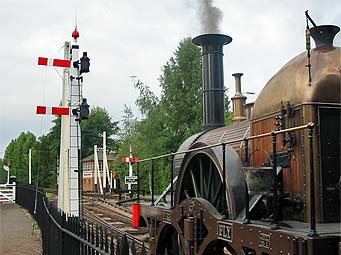
The signalling equipment worked by Frome cabin demonstrates typical GWR practice towards the end of the broad gauge period in the 1870's.
The most striking feature of the system is the overhead signal operating wires. The wires emerge from the box locking room at ground level as usual, but are immediately carried onto a huge timber gantry outside the box. From there they run out in a direct line on intermediate posts to the substantial ‘A’ frames where they come down to ground again and operate the signals.
The signals are themselves unusual, dating back to the middle of the last century. Firstly, there is the disc and crossbar signal. This was the first major type of signal on the Great Western Railway, but our type dates from after 1852 when downward pointing lugs on the crossbar were first used to distinguish down signals. The other distinguishing feature marking it out as a later type is that the wooden mast is fixed and carries an iron rod which rotates to change the signal - the earliest designs involved turning the entire post which could be up to 60ft tall!
Next to the disc and crossbar signal is a cast iron points indicator with its revolving red and white disc. This retains it’s (now disconnected) shoulder-height lever which the railway constable would originally have used to change the points.
The other signal operated by the overhead system is a twin-arm slotted post signal of the type supplied to the Great Western by Mackenzie and Holland. These date from the 1860s and constitute a step backwards in signalling practice. The apparent absence of the arm when it has disappeared inside the post giving the all clear was a departure from the usual ‘fail safe’ method of requiring a positive indication to proceed. This signal exhibits yet another antediluvian practice of having the signals for diverging routes mounted one above the other. The top most signal refers to the left hand route. This practice was forbidden in 1892 and instead small cast iron brackets with centre pivot arms were used to provided miniature bracket signals. An example of this type of bracket signal is also to be found at Didcot adjacent to Frome Signalbox.
More Information about the Signals
More Information about Early Signal Equipment
Bibliography
|
Raynar Wilson, H. 1900. Mechanical Railway Signalling: Part 1. |
